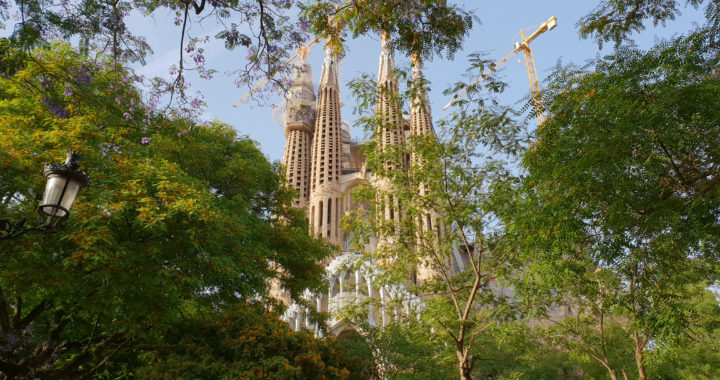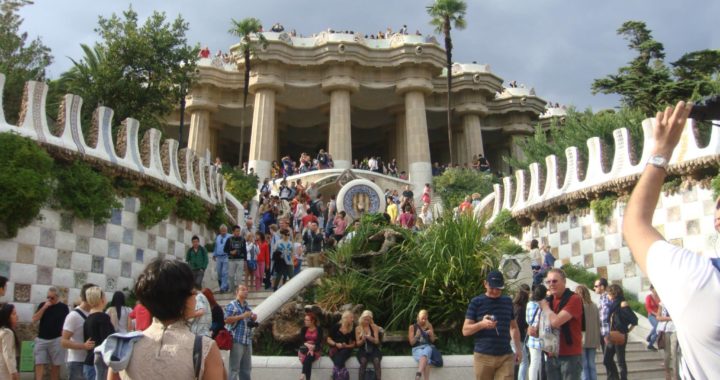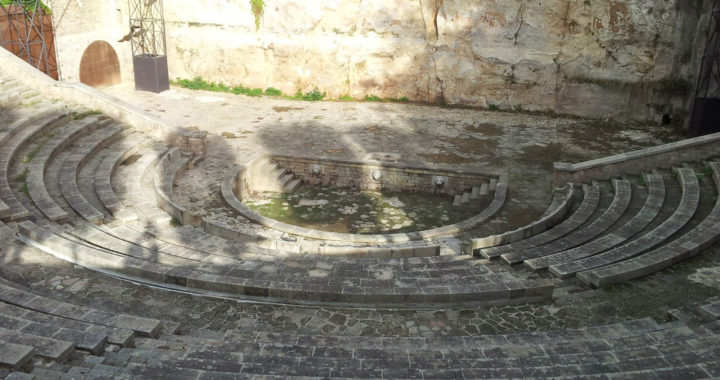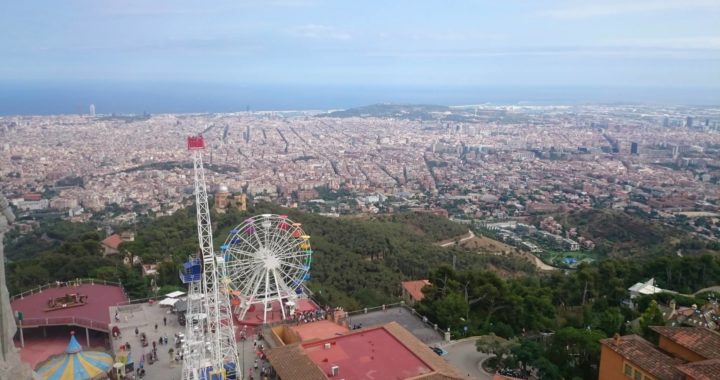The Basilica of the Sagrada Familia
A huge source of revenue for Barcelona tourism: The Sagrada Familia, this awe-inspiring cathedral draws in around 2.8 million visitors every year. In fact, this is the most visited monument in all of Spain.
If you have only one opportunity to go sightseeing in Barcelona, make sure it’s this. Read on to find how to maximize your Sagrada Família trip.
Construction
Designed by Barcelona’s famed architect Antoni Gaudí, the full name of this monument is the Temple Expiatori de la Sagrada Familia (in English, that’s the Expiatory Temple of the Holy Family). It was Gaudí’s overpowering obsession, his pièce de résistance.
A conservative society commissioned Gaudí to construct a temple as atonement for the sins of modernity, which the architect took to heart as his sacred mission in life. Work began on the temple in 1882 (yes, you read that right) and to this day, it hasn’t finished. There are hopes that it will be completed in 2026, though this may be a rather optimistic estimate.
When funds began to dry up, Gaudí donated much of his own money to the completion of the church. However, in 1926, the much-loved artist was hit by one of the Barcelona tramvías. Since he was an artist so dedicated to his work and not one for garishness in his own person, people thought the individual who had been hit was a homeless man. He was treated as such, provided with poor medical facilities, until it was discovered that he was actually the great Gaudí. Nevertheless, he refused transfer to a better facility, and eventually he succumbed to his injuries and died, leaving the Sagrada Familia unfinished.
Design
The temple is 95m long and 60m wide, with a seating capacity of 13,000 people. A central tower stretches 170m high above the transept (which represents Christ), and another 17 towers ascend 100m or more. Twelve of these towers represent Christ’s apostles, and the remaining five represent the Virgin Mary and the four evangelists.
Gaudí designed the basilica true to his fashion, featuring no straight lines in the architecture (he had an idiosyncratic dislike for straight lines, because of their non-existence in nature). The towers thus have outlines that swell a little, apparently inspired by the silhouette of Montserrat just outside Barcelona, and sculptures sitting atop their tips.
When Gaudí died, only the crypt, the apse walls, one portal and one tower had been completed, leaving the rest to a team of architects that took over his mission. By 1930, the northeast façade was
completed. But then, in 1936, anarchists destroyed the interior, leaving a gap in construction until 1952.
There is much controversy surrounding the construction of the building. Some people lament that much of Gaudí’s original plans were destroyed in 1936 due to a fire that the anarchists caused, and thus the computer reconstructions of these blueprints are not wholly accurate and perhaps not true to Gaudí’s plans and style. Nevertheless, the Sagrada Familia is still a stunning structure that overwhelms the senses when you gaze upon its facades.
Things to see at the monument
The main draw of the building is probably the Nativity Façade, constructed under Gaudi’s meticulous supervision. Three sections of this represent Hope, Charity and Faith. On the Charity portal, you will see the manger surrounded by animals and people, as well as angel musicians. The faces here were taken from plaster casts done of local people, with the odd few made from corpses in the local morgue. Furthermore, many local florae are reproduced in the stone. Above the stained-glass window, Archangel Gabriel’s Annunciation to Mary is depicted, with the mosaic work at the top of the towers made from Murano glass imported from Venice.
To the right is the Claustre del Roser, a cloister attached to the outside of the church. Once inside, make sure you look back at the entrance – there is an ophidian representation of the devil handing a terrorist a bomb, inspired by political violence during the civil war.
You can climb some of the towers featured by the Nativity Façade by a combination of lifts and staircases. Be warned, however, that these staircases are very tight and hard work. The upper parts of the towers are decorated with mosaics, which Gaudí said that the angels would see.
The southwest façade, known as the Passion Façade, is based on the theme of Christ’s death. This was constructed based on drawings left behind by Gaudí; the sculptor who worked on the portal was Josep Subirachs, who produced angular images so as not to imitate Gaudí – a controversial move. The main series of sculptures is an S-shaped sequence that starts with the Last Supper and ends with Christ’s burial.
In front of this is the Escoles de Gaudí, sculpted as a children’s school with an undulating brick roof. Inside, there is a recreation of Gaudí’s office as it was when he died.
The Glory Façade will also be surrounded by four towers when it is eventually completed. Gaudí wanted this to be the most spectacular Façade of the whole structure. Inside will be the foyer consisting of 16 ‘lanterns,’ which Christ represented by the central tower above the transept.
Below the church, the Museu Gaudí depicts the artist’s life and works as well as models and photos of the basilica. A side hall at the
eastern end leads to a viewing point above the crypt in which he is buried.
The inside of the basilica is just as stunning, with light streaming through stained-glass windows to create a kaleidoscope effect throughout the interior. Make sure you don’t miss the intricacy of the pillars supporting the structure.
Visiting the Basilica
You can catch the metro to the Sagrada Familia on the Blue Line, L5 and the Purple Line, L2, or catch one of a number of bus lines that run to the site. It is fairly central in Barcelona and therefore easy to access.
It costs €15 to enter the Sagrada Familia, but guided tours are offered for €24. Alternatively, you can grab an audio guide for €7 – either way, it is extremely rewarding to pay extra for information on the church and how it was build. Be aware that, since it is so popular, queues for the visit can be extensive, commonly exceeding 2 hours.
For an extra €14, you can get into the lifts that rise up the towers in the Nativity and Passion facades, but this must be pre-booked online.
Book your visit with this link
Are you looking for anything else? go to this link



